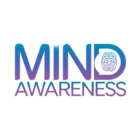How Does a Mentally Ill Person Behave in 2024?
Mental illness in 2024 manifests through distinct digital-age behaviors and warning signs. Common indicators include excessive social media use, irregular sleep patterns, and prolonged screen time that disrupts daily routines. People may display compulsive device checking, late-night posting, and sudden changes in online communication styles. Remote work environments often intensify feelings of isolation, leading to increased anxiety during video meetings and difficulty maintaining work-life boundaries. Physical symptoms can include eye strain, headaches, and disrupted sleep-wake cycles. Digital addiction frequently pairs with traditional mental health challenges, creating complex patterns of behavior that require modern therapeutic approaches. Understanding these contemporary manifestations helps identify when someone needs support.
Key Takeaways
-
Excessive social media usage with irregular posting patterns, content shifts, and late-night activity often indicate underlying mental health challenges.
-
Digital addiction manifests through compulsive device checking, neglect of responsibilities, and physical symptoms like eye strain and headaches.
-
Isolation despite digital connectivity, with difficulty maintaining meaningful face-to-face relationships and increased reliance on surface-level online interactions.
-
Sleep disruption patterns show resistance to bedtime routines, frequent night awakening, and morning drowsiness due to screen-time effects.
-
Financial behaviors may include impulsive online purchases during manic episodes or extreme hesitation in spending, affecting basic needs management.
Social Media and Mental Health
Through extensive research conducted in recent years, social media usage has shown significant correlations with various mental health conditions and behavioral patterns. Studies indicate that individuals with existing mental health challenges often display distinct online behaviors, including excessive scrolling, frequent status updates, and heightened emotional responses to virtual interactions.
Common indicators of mental health struggles on social media platforms include dramatic shifts in posting frequency, isolation from online friend groups, and sharing increasingly negative content. Users may alternate between periods of intense social media activity and complete digital withdrawal, which often mirrors their offline emotional states.
Additionally, time stamps of late-night posting can signal sleep disturbances, a common symptom of several mental health conditions.
Mental health professionals now regularly monitor patients’ social media behaviors as part of their assessment process. Key warning signs include sudden changes in writing style, excessive self-disclosure, or sharing cryptic messages that might indicate distress.
The platforms most associated with negative mental health impacts are image-focused networks, where users frequently engage in unhealthy social comparison and validation-seeking behaviors through likes and comments.
Digital Addiction Warning Signs
While digital technology has become increasingly integrated into daily life, distinguishing between normal usage and addiction requires recognizing specific behavioral patterns. Digital addiction manifests through compulsive device checking, increased screen time despite negative consequences, and withdrawal symptoms when technology access is limited.
Mental health professionals have identified several key warning signs that indicate problematic digital behavior in 2024:
-
Neglecting personal responsibilities, hygiene, or sleep to spend more time online, often losing track of time during extended usage sessions.
-
Experiencing anxiety, irritability, or panic when separated from devices, combined with an inability to maintain focus on non-digital activities.
-
Developing physical symptoms like eye strain, headaches, and poor posture while continuing excessive device use despite these health impacts.
The progression from regular use to addiction often occurs gradually, making early detection essential. Users might notice declining real-world relationships, decreased productivity, and a growing preference for digital interactions over face-to-face communication.
Setting boundaries, establishing tech-free periods, and monitoring daily usage through screen time apps can help maintain healthy digital habits and prevent addiction development.
Modern Workplace Mental Struggles
Modern workplaces have become pressure cookers for mental health challenges in 2024, with employees facing unprecedented levels of stress from hybrid work models, constant digital connectivity, and evolving job demands.
Workers frequently report symptoms of anxiety and depression tied to workplace factors, including deadline pressures and performance metrics that seem increasingly difficult to meet.
Common indicators of workplace mental strain include difficulty concentrating during virtual meetings, procrastination on important tasks, and frequent overwhelm when managing multiple digital platforms.
Many professionals struggle with maintaining boundaries between work and personal life, especially when working remotely. The always-on culture of instant messaging and email notifications further compounds these issues.
Mental health challenges often manifest through decreased productivity, increased sick days, and withdrawal from team interactions.
Employees may experience physical symptoms like headaches, disrupted sleep patterns, or changes in appetite.
The integration of artificial intelligence and automation tools has added another layer of stress, as workers feel pressure to constantly upskill while fearing job obsolescence.
These factors create a complex web of stressors that require active management through professional support and workplace mental health initiatives.
Post-Pandemic Behavioral Changes
Lingering behavioral patterns from the COVID-19 pandemic continue to shape how individuals with mental health conditions interact with society in 2024. Those diagnosed with anxiety disorders, depression, or other mental health challenges often display heightened sensitivity to social situations and physical proximity, even years after initial lockdowns ended.
Mental health professionals have documented several persistent behavioral changes that emerged during the pandemic and remain prevalent:
-
Increased agoraphobia symptoms, where individuals experience intense anxiety about leaving their homes or entering crowded spaces, often leading to avoidance behaviors.
-
Heightened digital dependency for social interaction, with many preferring virtual communication methods over face-to-face encounters, even when restrictions no longer exist.
-
Complex post-traumatic responses to ordinary activities like grocery shopping or using public transportation, manifesting as hypervigilance about cleanliness and personal space.
These adaptations have become deeply ingrained, requiring specialized therapeutic approaches that acknowledge both pre-existing conditions and pandemic-related trauma.
Healthcare providers now routinely incorporate pandemic-specific cognitive behavioral therapy techniques to address these evolving challenges, helping patients navigate the complex intersection of their original diagnosis and COVID-era behavioral modifications.
Isolation in Connected Times
The paradox of isolation amid unprecedented digital connectivity presents unique challenges for individuals with mental health conditions in 2024. While social media platforms and digital communication tools offer constant connection, many individuals experiencing mental illness report feeling more isolated than ever. This digital paradox often intensifies symptoms of anxiety, depression, and other mental health conditions.
| Impact Area | Digital Effect | Coping Strategy |
|---|---|---|
| Social Relations | Surface-level interactions | Schedule in-person meetings |
| Emotional Health | Comparison anxiety | Set social media time limits |
| Daily Routine | Online dependency | Create offline activities |
Mental health professionals now observe that excessive screen time and virtual interactions often substitute for meaningful face-to-face connections. Patients frequently report feeling disconnected from reality despite maintaining hundreds of online connections. To address this, treatment plans increasingly incorporate structured “digital detox” periods and guided reintegration into physical social settings. Mental health providers recommend balancing online engagement with regular in-person social activities, setting specific times for device usage, and participating in community events that foster genuine human connection. These strategies help individuals maintain digital boundaries while nurturing authentic relationships.
Tech-Induced Anxiety Patterns
Digital devices and constant connectivity trigger distinct anxiety patterns among individuals with mental illness in 2024. The perpetual stream of notifications, social media updates, and digital communications creates unique stress responses that manifest differently from traditional anxiety symptoms.
These tech-specific patterns often amplify existing mental health conditions, leading to observable behavioral changes.
Common manifestations of tech-induced anxiety include:
- Compulsive device checking, often accompanied by increased heart rate and perspiration when separated from digital devices for extended periods
- Heightened emotional responses to online interactions, including disproportionate distress over delayed message responses or social media engagement
- Physical symptoms like eye strain, tension headaches, and disrupted sleep patterns directly linked to screen time exposure
The constant digital engagement creates a feedback loop of anxiety-promoting behaviors, where individuals simultaneously seek connection and experience stress from that very connectivity.
Mental health professionals now regularly incorporate digital wellness strategies into treatment plans, addressing both the psychological and physiological impacts of technology use. Understanding these patterns helps in developing targeted interventions that acknowledge the role of technology in modern anxiety manifestations.
Sleep Disruption Indicators
Sleep disruption among mentally ill individuals in 2024 presents through distinctive behavioral markers that signal underlying psychological distress. These indicators manifest differently during various phases of sleep-wake cycles, often complicated by the increased use of digital devices and irregular schedules.
| Time Period | Common Indicators | Impact Level |
|---|---|---|
| Evening | Screen fixation, resistance to bedtime routines | Moderate to High |
| Night | Frequent awakening, racing thoughts | Severe |
| Morning | Difficulty waking, excessive drowsiness | High |
Observable patterns include irregular sleep-wake timing, with many individuals experiencing delayed sleep phase syndrome due to prolonged exposure to artificial light. Mentally ill persons may demonstrate heightened nocturnal activity, characterized by restlessness and inability to maintain consistent sleep patterns. They often report spending extended periods in bed without achieving restful sleep, leading to daytime dysfunction.
Key warning signs include dramatic shifts in sleep duration, persistent early morning awakening, and the inability to fall asleep despite physical exhaustion. These disruptions typically coincide with other symptoms such as changes in appetite, mood fluctuations, and decreased cognitive performance during daytime hours.
Financial Stress Manifestations
Financial stress among mentally ill individuals manifests through distinct behavioral patterns that have become increasingly pronounced in 2024’s economic landscape. These manifestations often emerge gradually and can greatly impact daily functioning, particularly in managing personal finances and maintaining financial stability.
Common indicators of financial stress in mentally ill individuals include:
-
Excessive spending during manic episodes, characterized by impulsive purchases and accumulation of unnecessary items, often followed by periods of severe financial restriction.
-
Paralysis in financial decision-making, where individuals become unable to open bills, check bank accounts, or respond to financial obligations due to overwhelming anxiety.
-
Hoarding of money or resources, sometimes accompanied by extreme frugality that interferes with meeting basic needs.
The relationship between financial stress and mental illness creates a cyclical pattern where economic pressure exacerbates symptoms, while symptoms make financial management more challenging.
Recognition of these patterns is essential for healthcare providers and support systems to implement appropriate interventions. Early identification of these behaviors allows for timely financial counseling and mental health support, potentially preventing severe financial consequences.
Virtual Reality Escapism
Virtual reality escapism has emerged as a significant behavioral pattern among mentally ill individuals in 2024, characterized by prolonged immersion in virtual environments as a means of avoiding real-world challenges and emotional distress. This behavior manifests through excessive use of VR headsets, digital avatars, and virtual social spaces, often exceeding 6-8 hours daily.
Mental health professionals have identified several key indicators of problematic VR escapism. These include neglect of personal hygiene, irregular sleep patterns, and decreased participation in physical social interactions.
Users frequently create idealized virtual personas that contrast sharply with their real-world self-image, leading to increased disconnection from reality.
The impact of this behavior extends to treatment compliance and recovery. Patients may miss therapy appointments, medication schedules, or support group meetings in favor of virtual activities.
Common virtual environments that attract excessive use include social platforms, gaming worlds, and therapeutic applications that have been repurposed for escape rather than treatment.
Healthcare providers now regularly screen for VR dependency during mental health assessments, particularly focusing on usage patterns, withdrawal symptoms, and the degree of real-world avoidance.
Online Relationship Complications
Among mentally ill individuals in 2024, online relationship complications have become increasingly prevalent, marked by intense emotional attachments to digital connections and difficulty maintaining healthy boundaries in virtual spaces.
These challenges often manifest through excessive social media monitoring, emotional dependence on online interactions, and difficulty distinguishing between virtual and real-world relationships.
Mental health professionals have identified several common patterns in online relationship complications:
- Obsessive checking of message “read” receipts and online status indicators, leading to heightened anxiety and paranoid thoughts about perceived digital rejection
- Formation of parasocial relationships with content creators or social media personalities, resulting in unrealistic expectations and emotional investment
- Difficulty shifting between online and offline social interactions, often preferring virtual communication even when face-to-face options are available
The impact of these complications extends beyond the digital domain, affecting sleep patterns, work performance, and real-world relationships.
Treatment approaches now commonly include digital boundary setting exercises, reality-testing techniques, and structured online interaction schedules to help individuals maintain healthier virtual relationships while developing in-person social skills.
Remote Work Mental Impact
Remote work environments have considerably altered the psychological landscape for individuals managing mental health conditions in 2024. Those with existing mental health challenges often experience intensified symptoms due to increased isolation and blurred boundaries between work and personal life.
Common manifestations include difficulty maintaining regular schedules, increased anxiety during video meetings, and struggles with task initiation when working independently. Many individuals report heightened depression symptoms due to reduced face-to-face interactions, while others experience paranoid thoughts about digital surveillance or performance monitoring.
The shift to remote work has introduced new triggers, such as technology-related stress and difficulty disconnecting from work devices. Mentally ill persons may obsessively check emails outside working hours, develop irregular sleep patterns, or experience panic attacks during technical difficulties.
Some display withdrawal behaviors, avoiding virtual social interactions and team meetings.
Coping mechanisms have evolved to include structured daily routines, designated workspace arrangements, and regular virtual check-ins with mental health professionals. Many individuals now rely on digital wellness apps and scheduled video therapy sessions to maintain stability while working remotely.
Digital Communication Challenges
Digital communication platforms, while enabling continued workplace connectivity, present distinct obstacles for individuals managing mental health conditions. People experiencing anxiety, depression, or other mental health challenges often struggle with digital interactions that neurotypical individuals might find routine.
The virtual environment creates unique stressors that can amplify existing mental health symptoms:
-
Text-based communications lack crucial non-verbal cues, leading to increased anxiety about message interpretation and potential misunderstandings.
-
Constant notification alerts and message threading across multiple platforms can overwhelm individuals with attention difficulties or sensory processing issues.
-
Video calls may trigger social anxiety and self-consciousness more intensely than in-person meetings due to the “mirror effect” of seeing oneself on screen.
To navigate these challenges effectively, individuals should establish clear boundaries around digital availability and implement structured communication protocols. This includes setting specific “offline” periods, using status indicators to manage expectations, and choosing appropriate communication channels based on message complexity.
Additionally, utilizing built-in digital wellness tools helps maintain healthy engagement levels while reducing potential triggers for mental health symptoms.
Screen Time Effects
Excessive screen time presents significant challenges for individuals managing mental health conditions in today’s technology-driven environment. Extended exposure to digital devices can intensify symptoms of anxiety, depression, and other mental health disorders through disrupted sleep patterns and increased social isolation. Many individuals find themselves caught in cycles of endless scrolling, gaming, or binge-watching, which can worsen their existing conditions.
| Screen Activity | Mental Health Impact | Recommended Daily Limit |
|---|---|---|
| Social Media | Increased anxiety | 30 minutes |
| Video Games | Attention issues | 1 hour |
| Work Screens | Eye strain/stress | 4 hours with breaks |
| Entertainment | Sleep disruption | 2 hours |
| Online Shopping | Impulse control | 30 minutes |
To maintain better mental health, individuals should implement specific screen time boundaries and utilize built-in device controls. Breaking screen time into manageable chunks throughout the day, with scheduled breaks for physical activity and face-to-face interactions, can help reduce negative impacts. Additionally, using blue light filters and maintaining proper posture while using devices can minimize physical strain that often accompanies excessive screen use.
Coping Mechanisms Today
Through modern advancements in mental health care, individuals with mental illness have developed diverse and sophisticated coping techniques to manage their conditions effectively. Today’s coping mechanisms combine traditional methods with technology-driven solutions, creating an all-encompassing approach to mental wellness management.
Contemporary coping strategies often include:
- Digital mindfulness apps that guide users through breathing exercises, meditation sessions, and mood tracking with real-time feedback
- Virtual support groups and online therapy platforms that provide 24/7 access to mental health resources and peer connections
- Wearable devices that monitor stress levels, sleep patterns, and physical activity, helping individuals identify triggers and patterns
The integration of these tools with conventional practices has transformed how people handle daily challenges. Many individuals now maintain digital journals, participate in teletherapy sessions, and use crisis intervention hotlines through messaging platforms.
Cognitive behavioral therapy techniques have adapted to include smartphone applications that help users challenge negative thought patterns. These modern coping mechanisms emphasize accessibility and discretion, allowing individuals to manage their symptoms while maintaining their daily routines and social connections.



